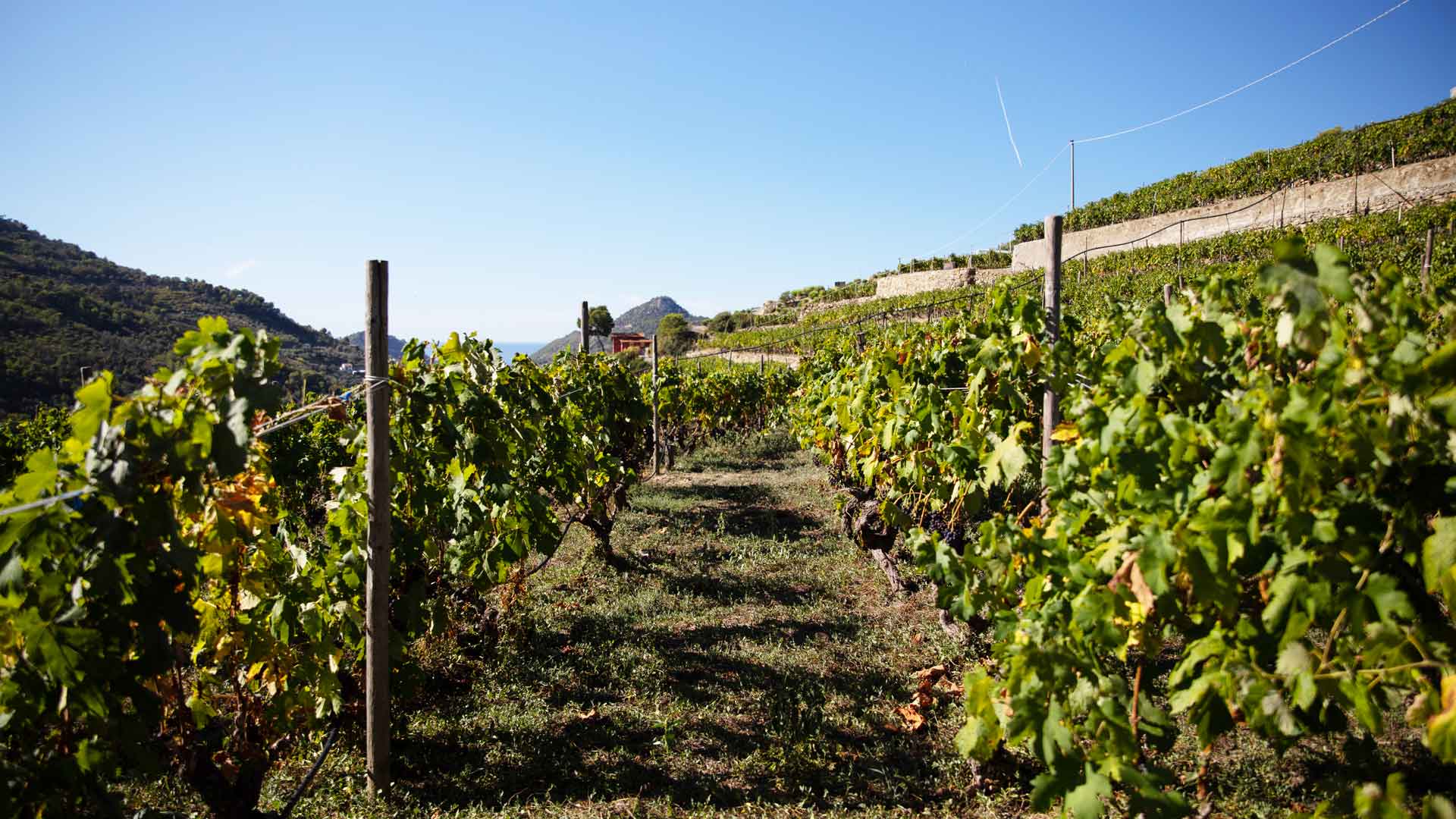Rossese di Dolceacqua, Vermentino and Pigato
Vines prefer the sunniest hillsides, where photosynthesis is encouraged and the sugary taste increased. Our soils, less humid than those on the plains, prevent stagnation and the development of mold and rot in the vines. They also present ideal temperatures for growing Rossese di Dolceacqua, Vermentino and Pigato grapes.
Vermentino is a grapevine with a medium-large, pentagonal leaf, with five lobes and pronounced, irregular teeth. The bunch, cylindrical or pyramidal in shape, can be medium or large, as can the yellow-green berry, which has a spheroidal structure.
Pigato is similar to Vermentino. It differs in its smaller leaves and bunches and in the color of the fruits, which, once ripe, are amber-colored, with typical rust-colored spots (called pighe in Ligurian dialect, hence the dialectal name pigàu).
The Rossese grape, on the other hand, has a large leaf with five lobes. Its bunch is medium-sized and truncated cone-shaped, winged and fairly compact; the fruit is round and dark purple, slightly waxy. The grapes used to create Rossese di Dolceacqua DOC must belong to this grapevine for at least 95% and can be supplemented by other local non-aromatic red varieties (maximum 5%), but we have chosen to vinify it in purity. Its maximum yield per hectare is 90 quintals.
Rossese di Dolceacqua was the first Ligurian wine to obtain DOC (denomination of controlled origin) status in 1972!


Vermentino is a grapevine with a medium-large, pentagonal leaf, with five lobes and pronounced, irregular teeth. The bunch, cylindrical or pyramidal in shape, can be medium or large, as can the yellow-green berry, which has a spheroidal structure.
Pigato is similar to Vermentino. It differs in its smaller leaves and bunches and in the color of the fruits, which, once ripe, are amber-colored, with typical rust-colored spots (called pighe in Ligurian dialect, hence the dialectal name pigàu).
The Rossese grape, on the other hand, has a large leaf with five lobes. Its bunch is medium-sized and truncated cone-shaped, winged and fairly compact; the fruit is round and dark purple, slightly waxy. The grapes used to create Rossese di Dolceacqua DOC must belong to this grapevine for at least 95% and can be supplemented by other local non-aromatic red varieties (maximum 5%), but we have chosen to vinify it in purity. Its maximum yield per hectare is 90 quintals.
Rossese di Dolceacqua was the first Ligurian wine to obtain DOC (denomination of controlled origin) status in 1972!

